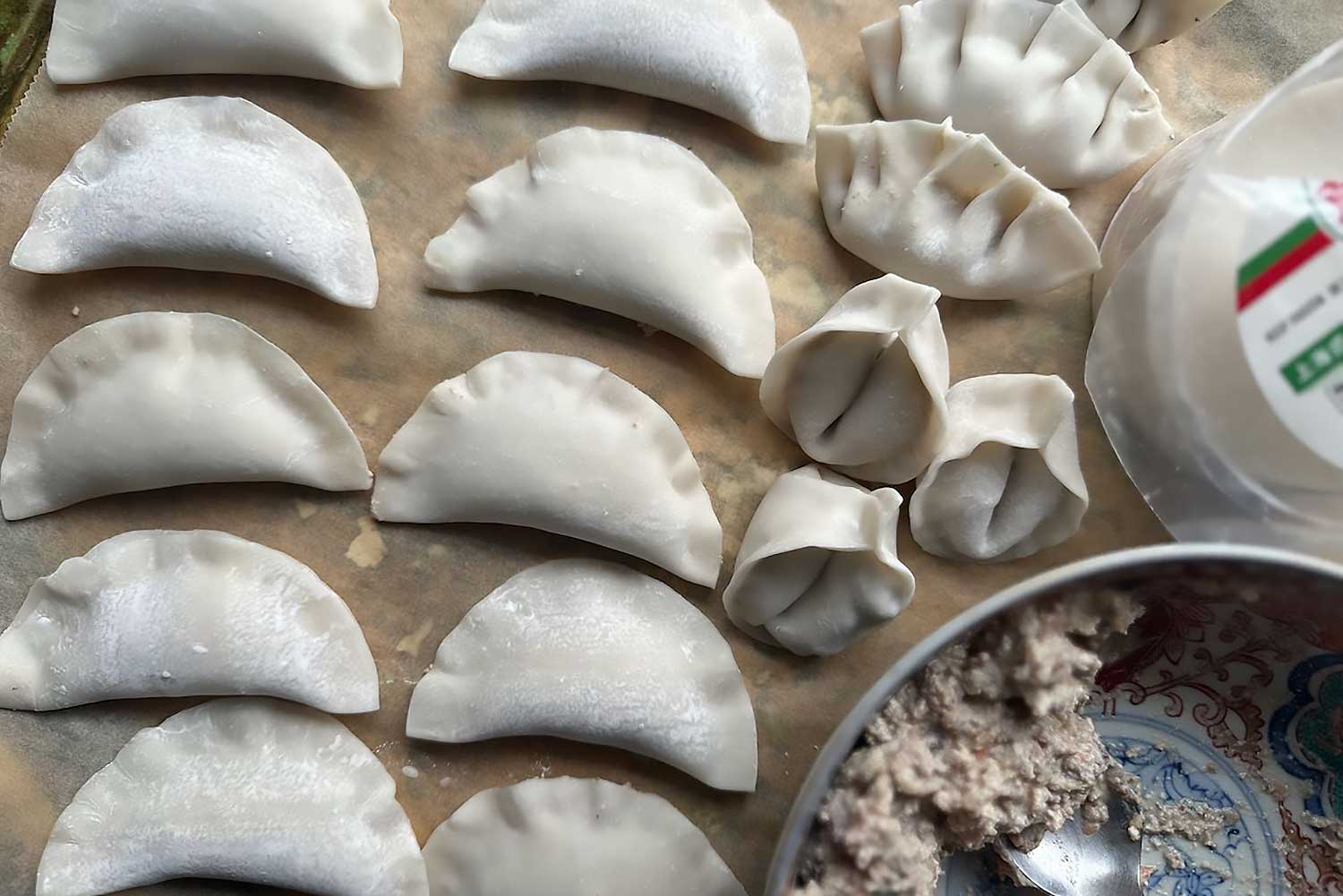This story is part of Technique Toolbox, a series in which top chefs and cookbook authors share the methods that unlock delicious, planet-friendly, or low-waste dishes.
This weekend finds us smack in the midst of Lunar New Year celebrations—whilst also contemplating our planet-friendly approach to Super Bowl snacks. So, we’re diving into the Technique Toolbox to dig into a method that’s ideal for either type of gathering: the dead-simplest way to make dumplings. This process comes courtesy of Kung Food author Jon Kung. His recipe is stuffed with veggies and tofu, but once you master the technique you can fill ’em with whatever you like.
These plump crowd-pleasers are a Chinese New Year staple for a reason: “A lot of the things on the Chinese New Year table are representative of something,” Kung says. “In the case of dumplings, they represent prosperity and wealth, because they look like little bags of money.”
Dumplings also happen to be a major win when it comes to curbing food waste. They’re the perfect receptacle for whatever leftover bits and bobs you have in the fridge, and they last for ages in the deep freeze. “Put them on a tray and stick them in the freezer for an hour, then put them in a plastic bag and have homemade dumplings on demand whenever you want to,” he says. “Just throw them in boiling water—don’t let them thaw, just put them right in.”
The technique
Even if you’ve never made a dumpling, rest assured anyone who can fold a piece of paper can handle the beginner level. It’s especially important to keep it simple at first when you’re using plant-based fillings: Veggies contain a lot of water, which means vegetarian stuffings will be looser than meaty varieties, making veggie dumplings just slightly more challenging to fold. OK, ready?
- Start with a package of round wonton wrappers (Kung likes the Twin Marquis brand) and lay them flat on a clean counter or cutting board—or you can work right in the palm of your nondominant hand.
- Add about a teaspoon of filling into the center of a dumpling wrapper, then dip your finger in some water and run it along the edges, “kind of like you’re wetting the edge of an envelope—if people even use envelopes,” Kung says.
- Fold the wrapper in half to form a semicircle, and squeeze the edges together, creating a good seal to make sure nothing can get out when you boil it, and no water can get in it.
- That’s it! You made a dumpling. 🥟Share
Why it works
Twin Marquis and other brands of wheat-based dumpling wrappers are made of flour, water, and salt (along with a little citric acid and a preservative like sodium benzoate), and they’re dry. Wetting the edges activates the gluten, making it sticky, which helps create a seal. “The water will mix in with the starch to kind of turn into a glue,” Kung says.
If you’re having trouble at first, it could be a wrapper problem as opposed to a you problem. “There are varying degrees of quality,” he cautions. “If you have a bad experience with one brand, don’t let that dishearten you—sometimes it’s the wrapper.”
Variations
Once you get comfy with the beginner-level folding process, go ahead and experiment. “You can do more folds for aesthetic purposes, and to change the eating experience of the dumpling,” Kung says. Try adding five or six accordion-type folds to the rounded edge, pressing as you go.
Or, make a dumpling that looks like an overstuffed tortellini: After making the main fold and sealing the edges together, gently press your index finger into the center of the straight side, then use your other hand to bring the two corners together around it. Remove your finger and use it to wet one corner, join it to the other, and pinch to seal.
Check out Jon’s video tutorial for other folding techniques.
Filling varieties can also expand to infinity. “You can use all sorts of vegetable scraps in the filling,” Kung says. “If all you needed was half an onion for a different recipe, keep the other half and dice that really small, maybe even sauté it a little bit beforehand to bring out the aromas.” They’re also an excellent vessel for things you might normally not know what to do with, like carrot tops.

